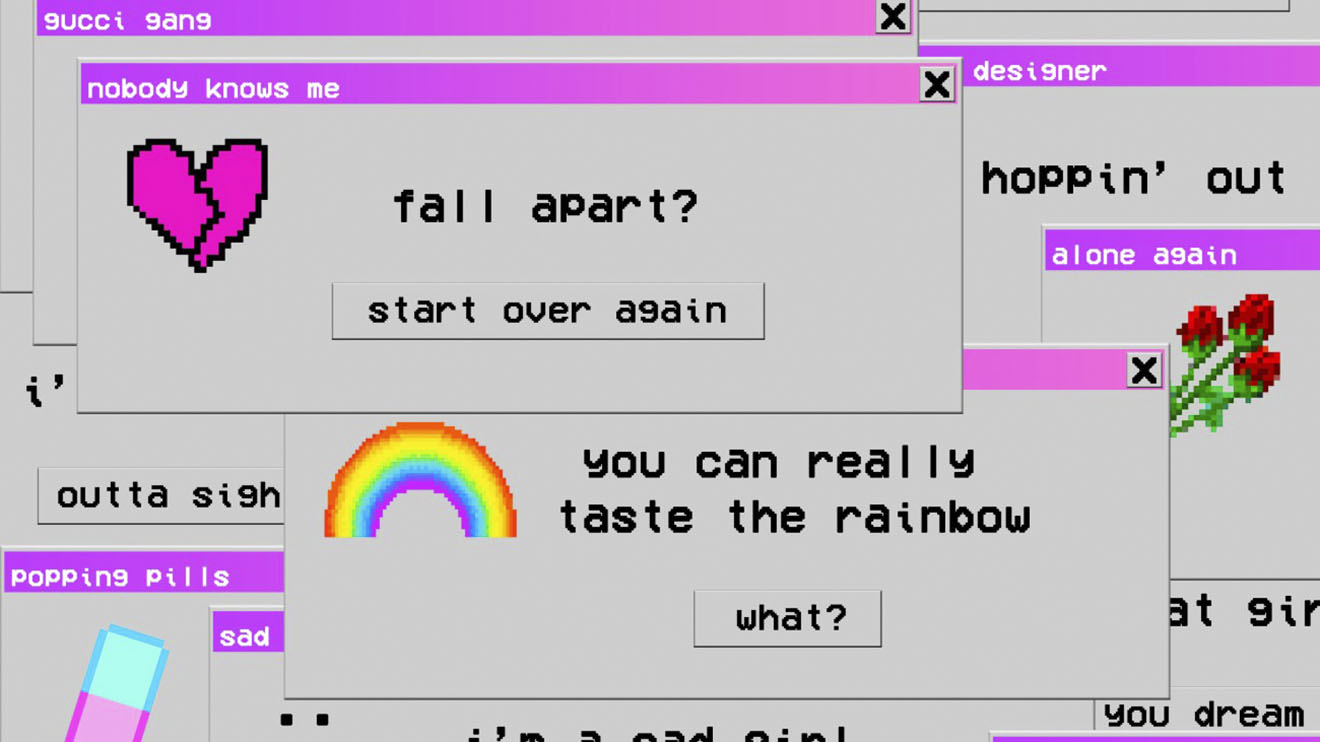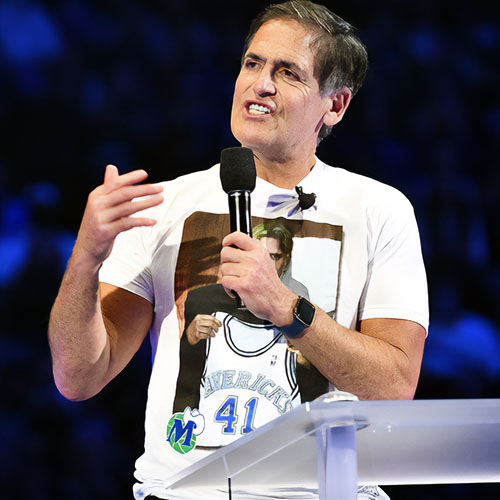How America’s benzo habit is reshaping pop culture and killing off celebrities one pill at a time.
The term “vaporwave” has been used to denote both a musical genre and a visual style, but it’s better understood as an aesthetic reaction to an environment of nonstop overstimulation — the endless scrolling content of a Tumblr dashboard, for example. Vaporwave’s fixation on vintage synthesizers and computer graphics extends from a nostalgia for a time where it was still possible to think of technology as an unalloyed good. Its austere compositions and staticky lo-fi distortion reflect the sensation of interacting with the world through a screen — a side effect of both internet overuse and benzo highs.
These days, social-media styles can slide frictionlessly into mainstream design, and bits of the vaporwave vocabulary have propagated throughout pop culture. For instance, classical marble sculptures have been a favorite visual motif of vaporwave artists, their emotive expressions carved out of cold stone standing in nicely for either the blank dissociative state of a panic attack, or at least simple digital-age alienation.
Within a short time of the classical sculpture craze starting on Tumblr, there were classical sculptures everywhere, on electropop album covers, Urban Outfitters graphic tees, and luxury clothing ads. It’s true that designers have returned again and again to classical art throughout the years, and it’s also true that it’s very easy to slap a cutout photo of a marble bust on top of a gradient and call it design, but there’s more of a resonance in those images right now than familiarity and corner-cutting can explain. (Apparently these days we just prefer seeing faces carved from marble than ones made from flesh.)
Social media has provided a way for our growing culture-wide weakness for benzos to find an artistic outlet. It’s also been a way for the drug culture to aestheticize its Xanax kick.
Despite their best efforts at policing, Instagram and Snapchat are full of shadowy users advertising benzos and other substances in tightly framed close-up photos of pills and powders in high-contrast white and blue and pink. Drug dealers have been using social media platforms as ersatz e-commerce sites for years, which isn’t too surprising if you know how adaptable drug dealers have been to the changing digital economy.
What is surprising is that benzo users have adopted the same techniques to document the drugs that they’re consuming, not selling, and that they outnumber dealers by a wide margin. Benzo users and abusers are finding each other on social media to share advice, support, and dealer hookups, and also to simply document their habits in photos, digital collages, and journal-like captions.
The term “vaporwave” has been used to denote both a musical genre and a visual style, but it’s better understood as a reaction to nonstop overstimulation.
And of course, the content — or art, or whatever you want to call it — that they’re creating around their benzo habits lends itself easily to vaporwave and other benzo-inspired aesthetics, resulting in moody, stylized images where pills and selfies and digital artifacts coexist side by side, blurring together content, identity, and antianxiety drugs in dizzying ways. Their attempts to find a chemical escape hatch from the constant churn of our digitally tethered lives become even more fuel for the machine. It’s no wonder they feel like they need Xanax to keep their heads straight.
Pharmaceutical companies have spent much of the past century developing new ways to stroke our GABA receptors and make our anxiety-riddled lives bearable, and each time they come up with a new one it tends to follow the same narrative arc. First, they’re prescribed to the acutely ill, and then to more or less anyone who asks. Eventually, they’re everywhere, and used with increasing abandon, until enough people decide that it’s a problem and they’re restricted or banned entirely. Whether they’re called barbiturates or Quaaludes or Librium or Valium, we’ve gone through the same cycle over and over again.
Considering the apparent uptick in celebrity deaths involving benzodiazepines over the past few years, and the increasing danger of recreational abuse now that unethical dealers are passing off fentanyl as Xanax bars, it feels like we should be nearing the end of peak Xanax. At some point, we’re going to have to reckon with our culture-wide benzo habit. We can’t go on like this any more than we could go on drinking and smoking as we did in the Eisenhower days.
Then again, who knows? Maybe we can. The things that are driving us to swallow tranquilizers by the truckload don’t seem to be going away anytime soon. There don’t seem to be very many people these days who aren’t walking around under the constant weight of some colossal existential worry, whether it’s the possibility of civilizational collapse or just making rent. There’s a growing feeling that things are spinning too far, too fast, for anyone to control anymore. And the easiest way — sometimes the only way — to get rid of that fear is with a little white bar. It’s possible the Age of Xanax is just getting started.
Miles Raymer is an artist and writer living in New York City. All Art by Molly Soda.





















